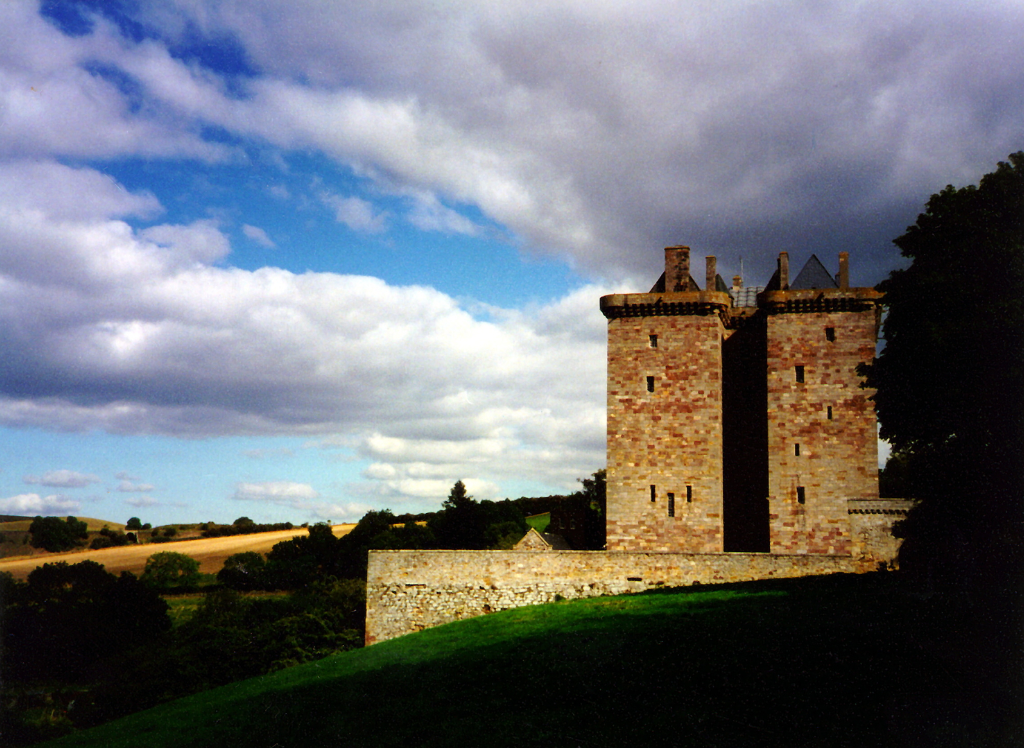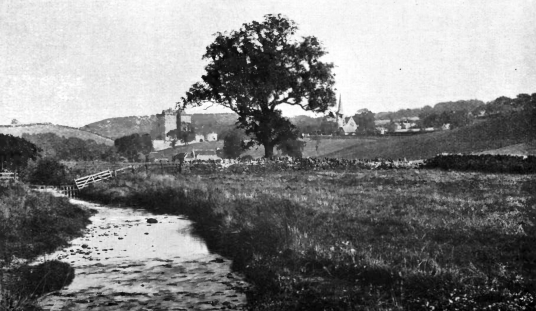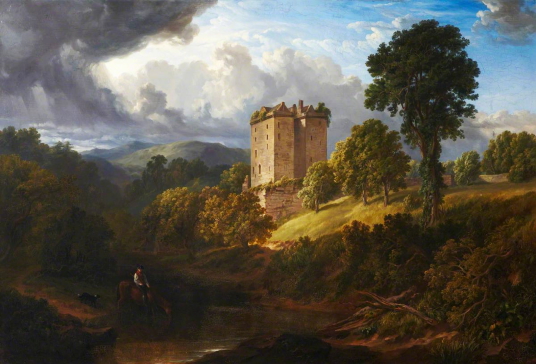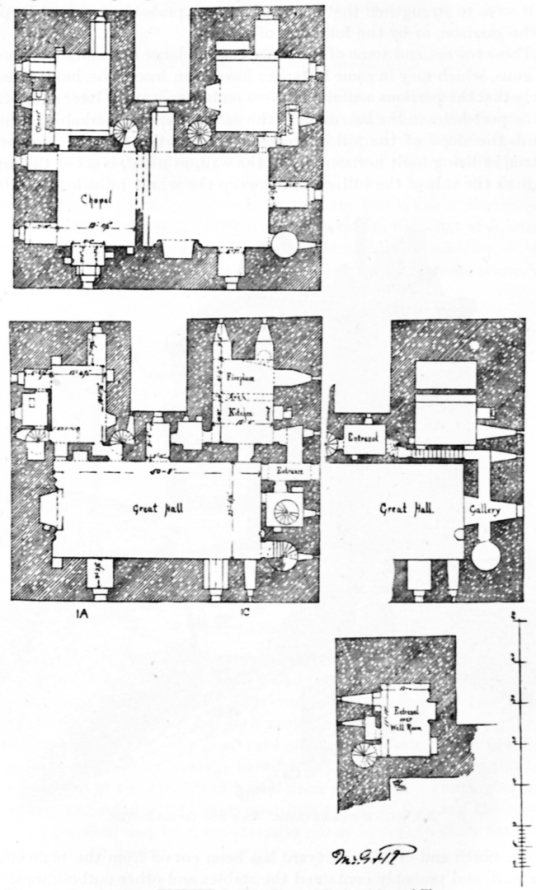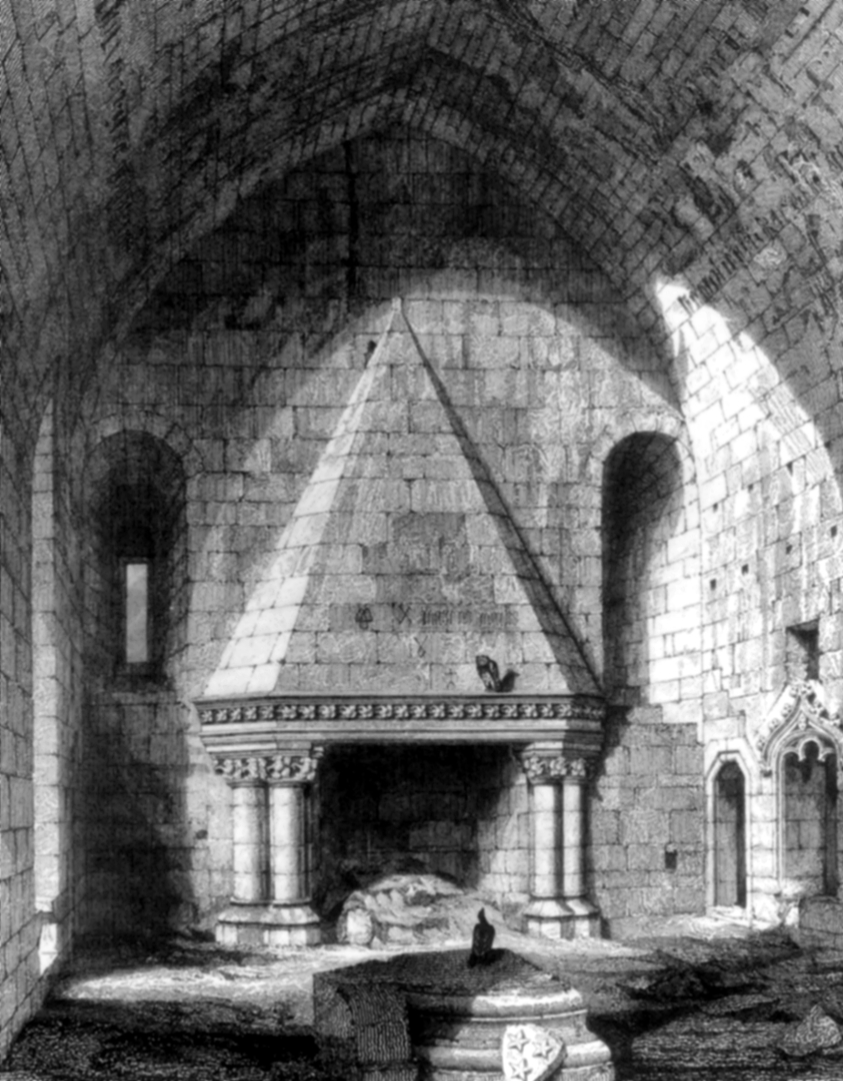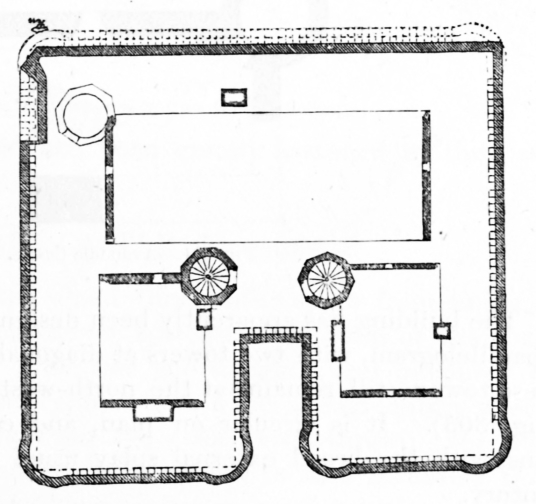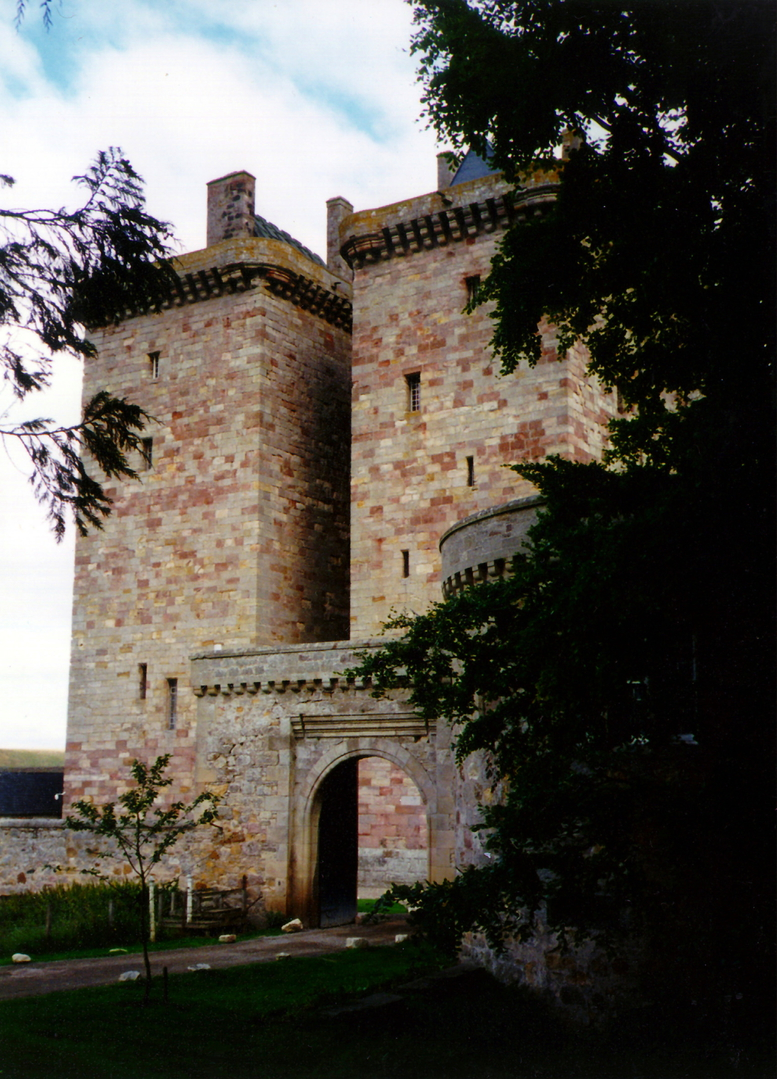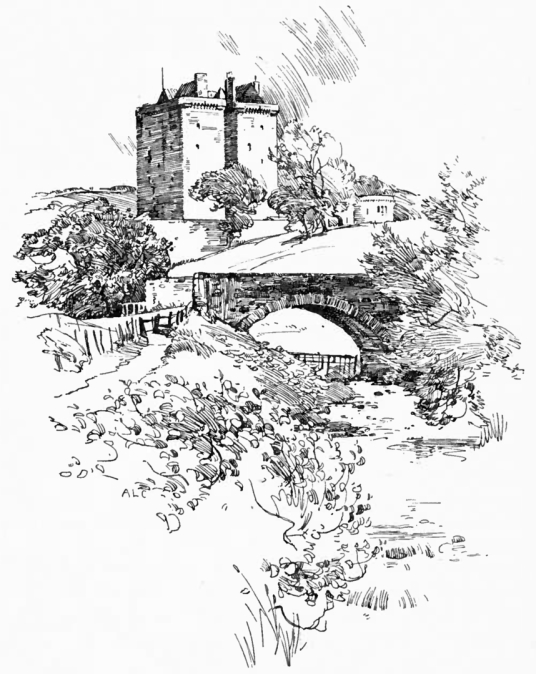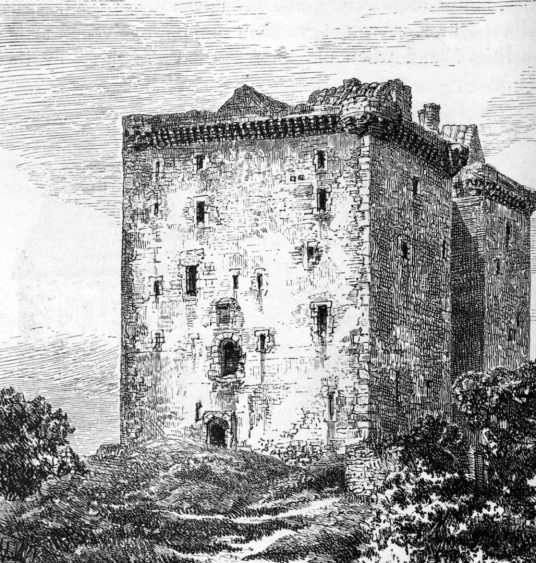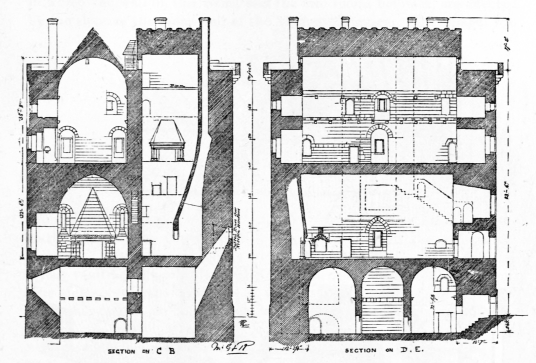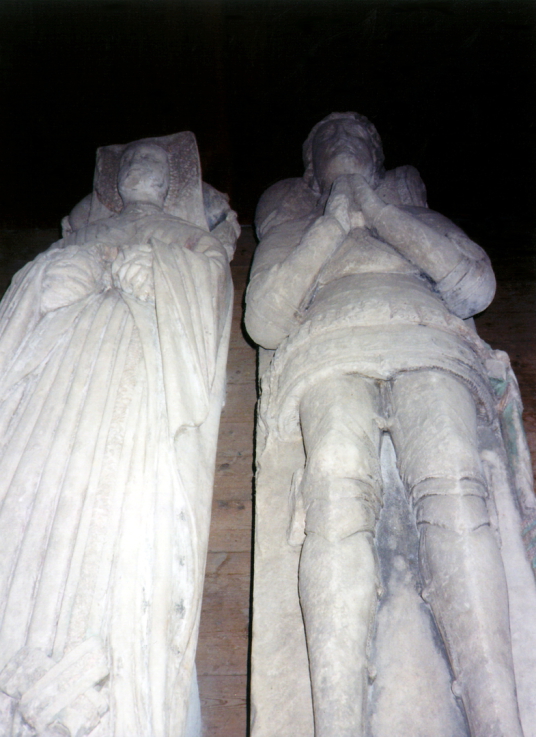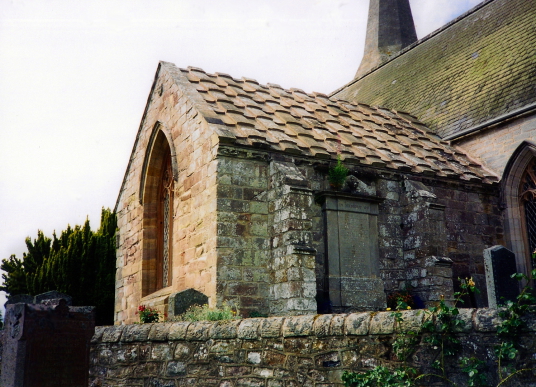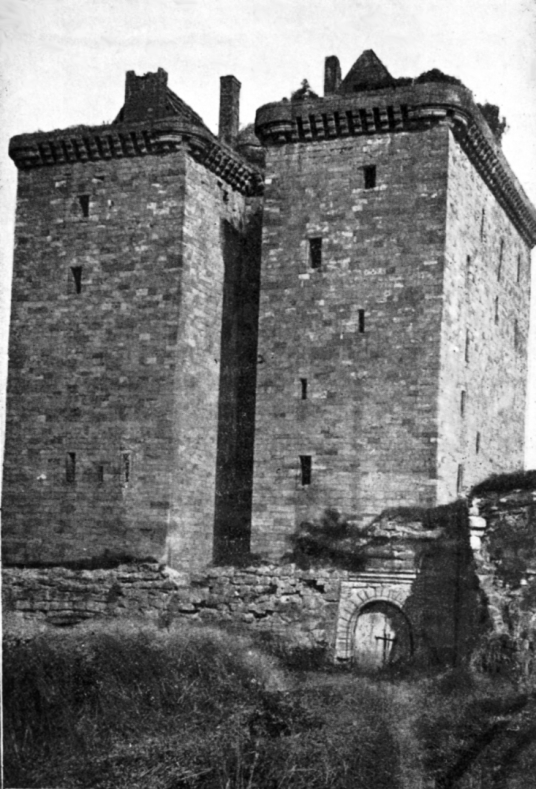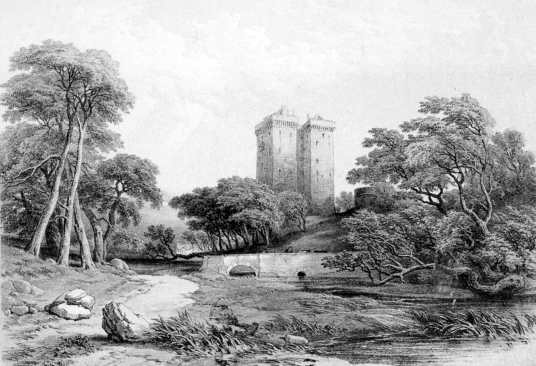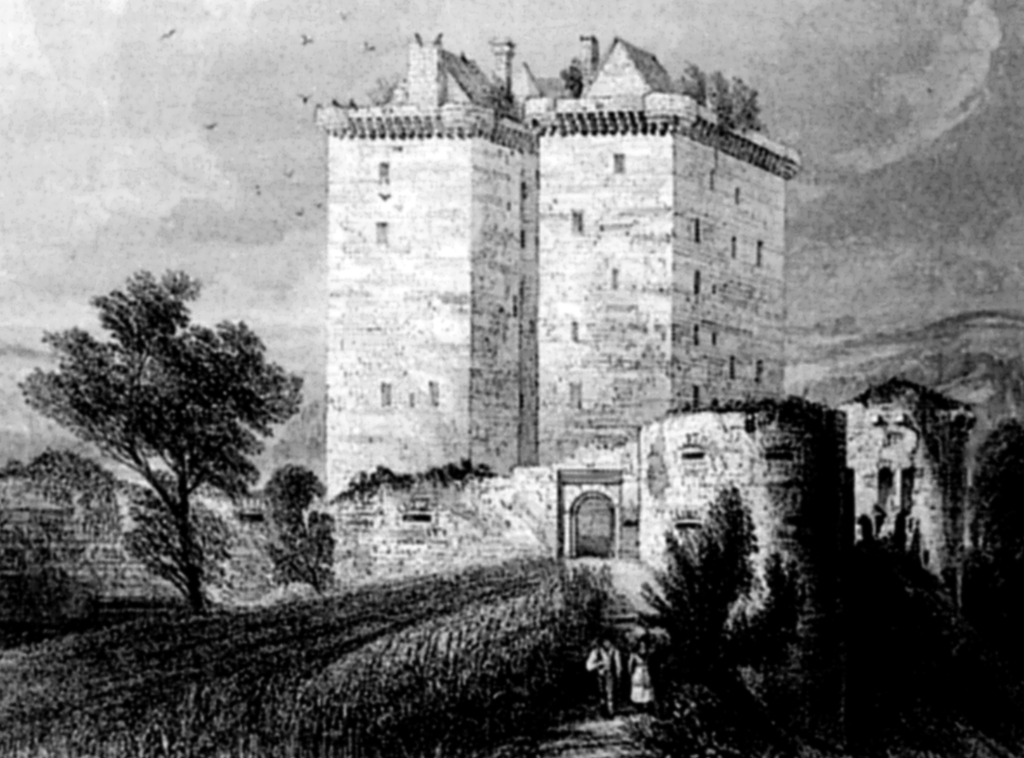Borthwick Castle
Borthwick Castle, a lofty and magnificent tower house in a quiet scenic location, built in the 15th century by the Borthwick family and now an exclusive hotel, located near Gorebridge in Midlothian and not far from Edinburgh in central Scotland.
Lothians: About 2 miles south-east of Gorebridge, on minor road between north of A7 and south of B6372, south of Gore Water, just east of Borthwick village and Borthwick Parish Church, at Borthwick Castle.
Private NT 370597 OS: 66 EH23 4QY
OPEN: Exclusive hotel. Weddings and events.
Tel: 01875 820514 Web: www.borthwickcastle.com
Borthwick Parish Church: open by arrangement.
One of the most impressive castles in Scotland, Borthwick Castle is a magnificent U-plan tower of five storeys, rising to 110 foot, with projecting wings of seven and eight storeys, separated by a deep narrow recess. The walls are massively thick, up to 14-foot thick in places, but there are no gunloops. A corbelled-out machicolated parapet has open rounds, and the castle is roofed with stone flags. It stands in a courtyard, formerly with a curtain wall and strong round towers at the corners, only one of which remains.
The main entrance, on the first floor, is reached by a bridge from the curtain wall. A guardroom opens off one side of the entrance. The basement is vaulted, and has its own entrance, with a turnpike stair leading to the first floor through the guardroom.
The vaulted hall is on the first floor of the main block, and has a minstrels’ gallery, reached by a small stair. There is a massive fireplace, and the
windows are deeply recessed because of the thickness of the walls. The kitchen, on the same floor, has a huge wide fireplace. There are three further storeys above the hall, one of the chambers
having an oratory with piscina and aumbry.
The wings contain private chambers, reached by stairs in the thickness of the walls.
‘Borthyik’ is prominently marked on Blaeu’s map of The Lothians, then ‘Borthwick’ on Adair’s map of Midlothian, where it is depicted as a large building.
The property was held by the Hays, but was sold to the Borthwicks around 1430. One of the family had accompanied the heart of Robert the Bruce to Granada in Spain on crusade along with the Black Douglas and other Scottish nobles. Although the crusade was a disaster for the Scots, and many were slain, Borthwick distinguished himself by killing a Moorish chief and sticking his severed head on a pike.
The castle was built by Sir William Borthwick in 1430. The tomb of Borthwick and his wife Beatrice Sinclair, daughter of the 1st Earl of Orkney with two finely carved stone effigies is in nearby Borthwick Parish Church [NT 369597]. The church dates from the 12th century, although it became ruinous after a fire and was then substantially rebuilt. It incorporates the Arniston Aisle, where the Dundases of Arniston were buried. The church currently has structural issues (website).
The 4th Lord Borthwick, another William, looked after the infant James V after the disastrous battle of Flodden in 1513, when James IV was slain. James Hepburn, Earl of Bothwell, and Mary, Queen of Scots, visited the castle in 1567 after their marriage and were besieged here, Mary only escaping disguised as a man. Cromwell attacked the castle, but it only took a few cannon balls and the letter below to get the castle to surrender – the damage done to the parapet never being repaired and visible at the rear of the tower. The garrison withdrew with their arms and goods.
Letter dated 18th November 1650.
To the Governor of Borthwick Castle.
Sir,
I thought fit to send this trumpett to you, to let you know, that if you please to walk away with your company, and deliver the house to such as I shall send to receive it, you shall have liberty to carry off your armes and goods, and such other necessaries as you have.—You have basely, inhumanly, murdered our men: if you necessitate me to bend my cannon against you, you must expect what I doubt you will not be pleased with; I expect your present answer,
And rest your servant,
OLIVER CROMWELL
The Borthwick family abandoned the castle in the 17th century, and the building became derelict, although it was restored in 1890. During World War II, Registrar records were stored here, along with paintings from the National Gallery. The castle was leased as a conference centre, and after refurbishment is now an exclusive hotel.
The castle was also used as a location in the Netflix movie Outlaw King, about Robert the Bruce.
There is a sad and gruesome ghost story, perhaps a little inventive and imaginative (even for spooky takes). A local girl, called Ann Grant, was apparently made pregnant by one of the Borthwick lords. The poor young woman, heavy with child, was seized, slashed across the abdomen with a sword, and then left to die in what is now the haunted room. Manifestations reported in the castle are said to be from this event.
Another ghost is said to be that of a ‘chancellor’ of the castle who was executed by being burnt to death after having been found to be embezzling money from the Borthwicks. A third ghost is said to be that of Mary herself, in disguise as a pageboy, fleeing from the castle. The apparition is reported to be seen between the castle and the nearby churchyard.



